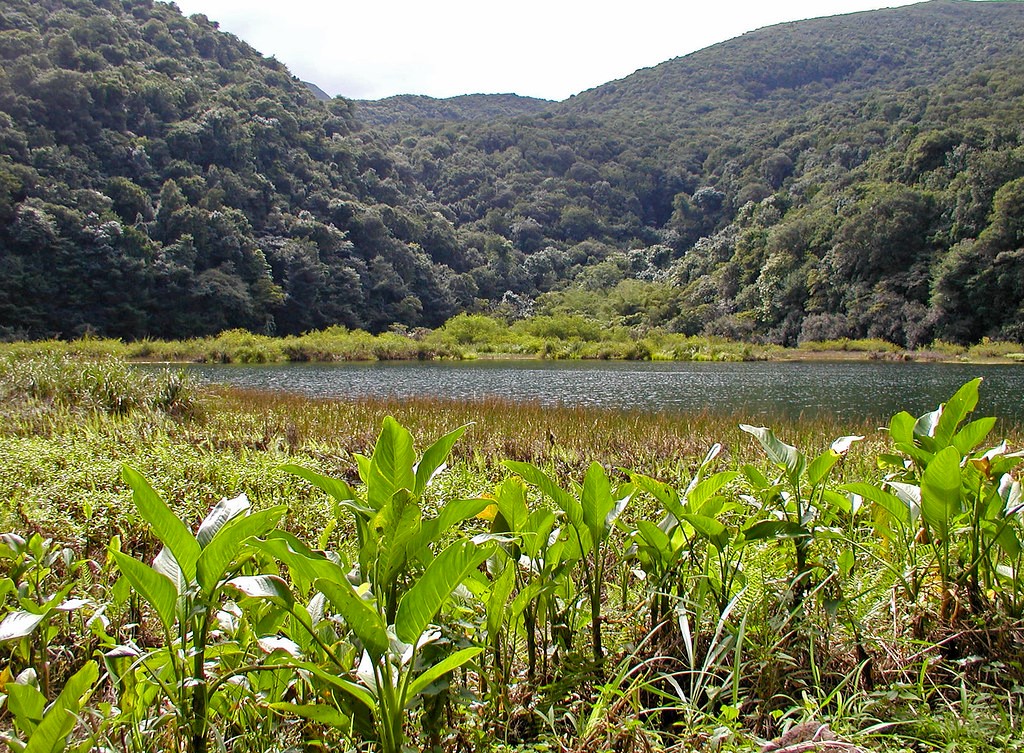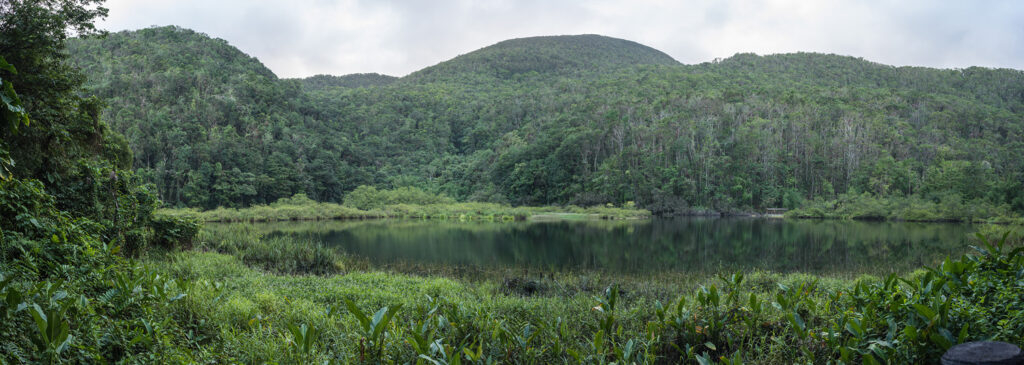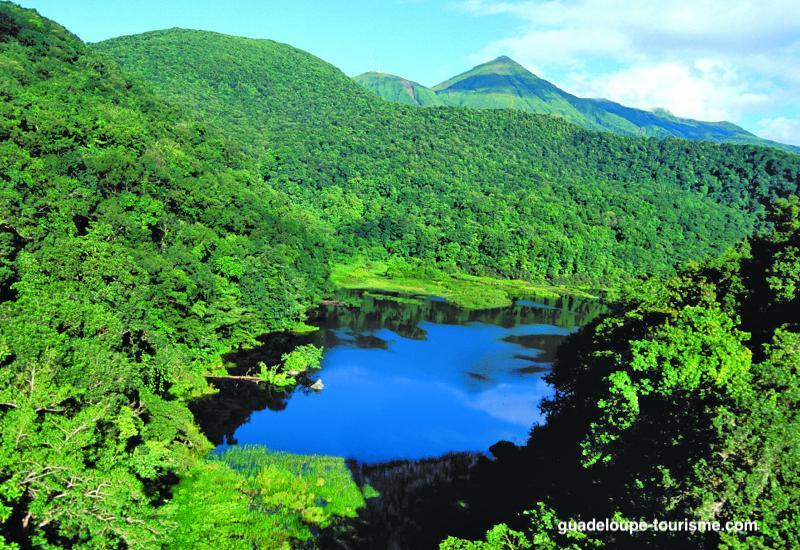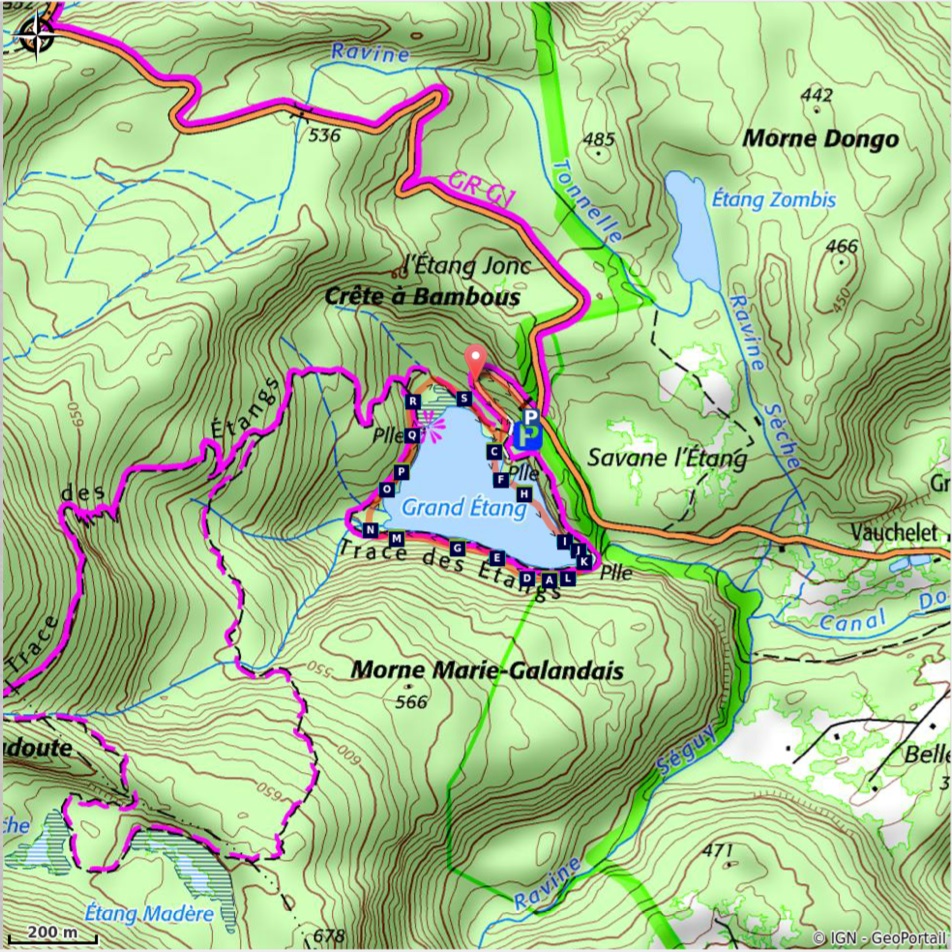
Grand-étang
The Grand-Étang, a natural depression* located 400 meters above sea level, covers an area of
5 hectares and has a depth of up to 10 meters in some places. This makes it the largest lake in
the Basse-Terre’s mountain range. Formerly called “The Great Mountain Water” by the Island
Caribs (Kalinago), it was formed 10,000 years ago due to the collision between lava flows. The
volcanoes responsible for this natural wonder are now extinct. The runoff from three ravines
together with the clayey, and therefore airtight, bedrock of the area encourages water retention. Runoff carries sediment causing siltation of the pond.
Thus, seemingly imperturbable, this type of ecosystem* is rich but fragile. When it is invaded
by aquatic vegetation living on sedimentation, the filling of the pond progresses rapidly. For this reason, human intervention: uprooting and mowing the plants, and dredging the sediments
is essential for its survival.
The Grand-Étang is a reservoir of biological diversity protected by the Guadeloupe National
Park. Its beauty, quiet and exceptional, attracts lovers of nature.
But, it is important to mention that this interesting phenomenon is not an isolated case, the
Grand-Étang’s closest neighbor is the Zombis pond at 440 meters above sea level; and further
up are Madeira Pond, Roche Pond and Ace of Spades Pond
Biodiversity
The Grand-Etang is populated in its vicinity by rushes and ferns, and above all by cocoplum or
icaco (Chrysobalanus icaco). The swamp forest that develops on one shore of the pond is
mainly represented by boarwood (Symphonia globulifera) and malay rose apple trees (Syzygium
malaccense). In this area you can also find species typical of dense forest areas such as:
candlewood (Dacryodes excelsa), Asplundia insignis, etc.
The avifauna of the wetlands represented by: the gray trembler (Cinclocerthia gutturalis) or the
osprey (Pandion haliaetus) are two examples of the difference in the interactions of the fauna
with this medium. The former pulls its prey (snails) out of the water to break it on the
surrounding rocks, while the latter disturbs the water to catch the fish. Other birds, such as
common moorhens or waterhens (Gallinula chloropus), swim there. This muddy area is also
home to an aquatic fauna of crustaceans (big claw river shrimp or Macrobrachium carcinus),
fish such as tilapia, and leeches, whose development fluctuates according to rainfall, runoff that
flows into them, and the maintenance that benefits the pond.
Ecotoutism potential
The journey around this large body of water, particularly appreciated by birds, lasts about an
hour and allows you to discover the hygrophilous forest* without much difficulty (1h30). The
path leads to a floating observatory from which numerous specimens of the local bird life can
be observed. Strewn with botanical panels that explain its origins, its maintenance and its future,
this pond is an ideal place to learn and discover the natural forest and pre-forest heritage of
Guadeloupe.
From the Grand-Étang lake, a route (the Boucle des Etangs) connects the other bodies of water
mentioned with each other, in less than 5 hours. During which you can discover the biodiversity
of submerged and exposed ponds depending on the season in which they are visited.
Topographic map:




Informations
-
Types de milieux
Étangs -
Location
Guadeloupe (Capesterre-Belle-Eau)
